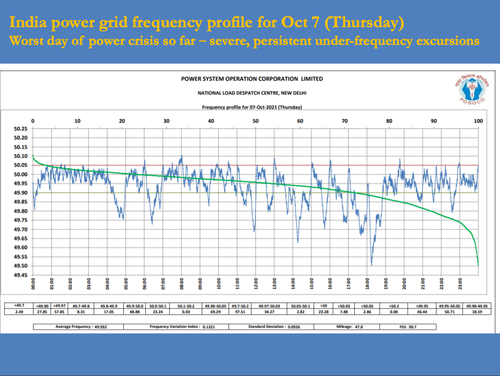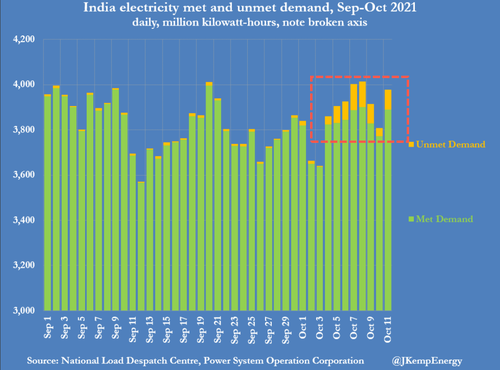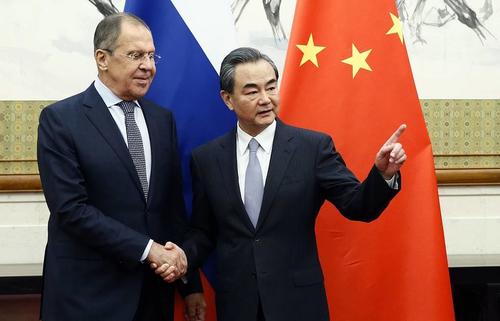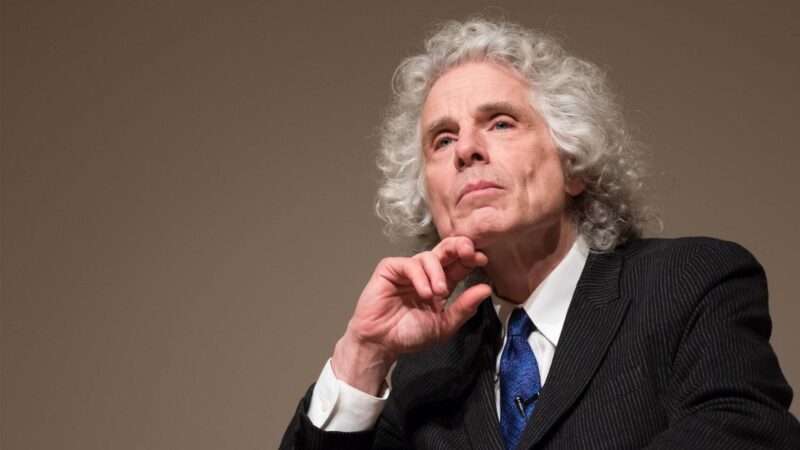Kemp: Beset By Coal Shortages, India’s Power Grid Struggles To Meet Demand
By John Kemp, Reuters energy analyst and reporter.
India has experienced persistent electricity shortages since the start of October as power generators have proved unable to meet resurgent demand as the economy rebounds from last year’s coronavirus-driven recession.
The country’s power crisis stems from the same mismatch between rapidly growing demand and lagging supply that is also causing electricity shortages in China and soaring gas prices across much of Europe and Asia.
Generation shortages are manifesting themselves in blackouts and rotating power cuts as well as persistent under-frequency on the country’s transmission system.
The crisis has been building for some weeks, first in the form of a slide in coal stocks, then a deterioration in grid frequency, and now most obviously in blackouts hitting parts of the country.
Grid controllers normally aim to keep frequency steady and very close to target, minimizing the size and duration of any deviations, which can damage generators as well as customer equipment.
Below-target frequency indicates there is not enough generation to satisfy the total load on the transmission system (by contrast, above-target frequency indicates there is too much generation).
India has a grid frequency target of 50 cycles per second (Hertz) with controllers tasked with keeping it steady between 49.90 Hz and 50.05 Hz to maintain the network in a safe and reliable condition.
But average frequency has fallen well below target since the start of October, and the shortfalls have become larger and longer, indicating a chronic shortage of generation.
On Monday, the average frequency fell to just 49.96 Hz, down from 50.03 two weeks earlier, and the proportion of time spent below the minimum target increased to 21%, from less than 1%.
On Oct. 7, the worst day of the power shortages so far, the average frequency dropped to just 49.93 Hz, and the grid was below its minimum target for almost 28% of the day.
Transmission controllers have been forced to inflict local blackouts to prevent frequency dropping even further and threatening the overall stability of the network.
On Oct. 7, the nationwide shortage peaked at 11.7 Gigawatts and the day’s total unmet electricity demand hit 114 million kilowatt-hours, equivalent to almost 3% of total demand.
COAL SHORTAGE
Thermal power generators, most of them fuelled by coal, have proved increasingly unable to keep up with customer demand and the generation plan.
Cumulative power production since the start of April has fallen 21.5 Terawatt-hours (-2.9%) behind plan, worsening from a deficit of 11.6 TWh (-2.0%) at the end of August.
Thermal power generation has now fallen 21.7 TWh (3.6%) behind plan, from a deficit of 9.7 TWh (-2.0%) at the end of August.
The shortfall in coal-fired generation has become so large it can no longer be covered by the above-plan output from nuclear and hydro sources.
Coal-fired power plants are encountering increasing problems securing enough fuel to meet planned generation owing to a combination of fuel shortages and transport problems.
Coal-fired power plants have an average of just 4 days of fuel on hand compared with 19 days in October 2020 and 12 days before the pandemic in October 2019.
Coal stocks are rated critically low at 116 out of 135 generating plants (86%) across the country and those power plants account for 142 GW of generating capacity out of a total of 165 GW (86%).
Fifteen power plants have less than one day of fuel on hand and another 47 have only 1-2 days fuel in their yards, according to daily reports from the Central Electricity Authority (CEA).
Power producers report coal shortages are currently responsible for forced outages or some loss of production at 60 generating units across the country (“Daily maintenance report”, CEA, Oct. 11).
Outages and losses are reported at coal-fired units in the states of Uttar Pradesh (14), Maharashtra (11), Gujarat (7), Rajasthan (6), Chhatisgarh (6), West Bengal (5), Punjab (4), Tamil Nadu (3), Karnataka (3) and Madhya Pradesh (1).
Until fuel stocks improve and more coal-fired plants are able to return to full production the electricity grid will struggle to meet high levels of power demand.
* * *
What’s worse, the energy crisis rippling worldwide could be doomed to repeat in the US. For more on that, read: “Energy Crisis May Unleash Winter Blackouts Across US, Insider Warns.”
Tyler Durden
Wed, 10/13/2021 – 19:25
via ZeroHedge News https://ift.tt/3mRvAAv Tyler Durden











